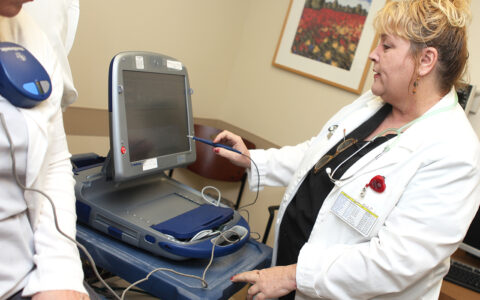The Indego® exoskeleton, an intelligent assistive device for walking, had its inception at Vanderbilt University in 2009 and went to market as the flagship product in Parker Hannifin’s new medical device division in 2016. This device is offered to improve mobility and independence for many who require wheelchairs or who have impaired gaits that make walking slow and exhausting.
Now, Vanderbilt researchers, led by Michael Goldfarb, Ph.D., director of the Center for Intelligent Mechatronics, are quantifying the health benefits of wearing the device. A study funded through the Department of Defense’s Congressionally Directed Medical Research Program will show to what degree people with spinal cord injury using the exoskeleton enjoy improved cardiovascular function, bone mineral density, and bowel function as well as reduced pain, spasticity and skin disorders.
“It’s clear it improves mobility and accessibility, but we want to understand the extent to which the technology may provide additional health benefits,” Goldfarb said.
Today’s Indego® Exoskeleton
The exoskeleton device weighs 26 pounds and has five parts that snap together. The user mixes-and-matches these parts to fit their physique. It can be carried in a bag over the back of a wheelchair or on a lap, and can be snapped into place in about two minutes.
With six microprocessors that communicate through a serial bus, the device was painstakingly designed to provide safe and intuitive walking assistance that mirrors natural movement. It takes cues from the way the wearer leans, and has built-in vibration alerts as a check on movement that may not be intended. “It’s a lot like a legged Segway™,” Goldfarb explained.
With practice and using forearm crutches for stability, wearers can walk up to several miles on a battery charge, at speeds up to two miles per hour.
Three-pronged Study Evaluates Potential Benefits
Goldfarb works closely with Gerasimos Bastas, M.D., medical director of the study at Vanderbilt, and Chrissy Durrough, P.T., lead physical therapist. The study is comprised of three parts, investigating:
1. prospective health benefits of Indego® as it exists on the market today;
2. additional prospective benefits when lower limb functional electrical stimulation (FES) is supplied as part of the Indego®; and
3. how much, and in what ways, those with an Indego® use it.¹
Currently, 22 patients at Vanderbilt, Mayo Clinic and the Tampa VA Hospital are participating, each walking in the Indego® for one hour, three times a week, for eight weeks. Researchers are collecting blood tests, DEXA scans, clinical spasticity tests, neurological and functional tests and questionnaires at four and eight weeks. They will repeat the tests two months later to see if gains were sustained without continued use of the device.
“In this first phase of our trial, we have seen people come off of pain medications, come off of spasticity medications. We’ve seen improvements in bowel function, and we’ve seen functional recovery in people with incomplete spinal cord injuries. However, we don’t know how statistically significant these are because the data aren’t all in yet,” Goldfarb said. He expects initial analysis of study data by June 2019.
Seven of 22 expected recruits are enrolled so far in the second, FES portion of the study. The final study arm, which has not yet begun, will explore the device’s utility in the home and community.
Future Evolution of Exoskeleton Technology
Goldfarb anticipates future designs that are smaller, and lighter weight for those with significant gait impairments that don’t require the level of assistance the current Indego® provides. These could reach a much larger population. “People with cerebral palsy, multiple sclerosis, hemiparesis from stroke or who are post-polio can wear something lighter and walk with a quad cane. The idea is to erase their limp, to the extent possible,” Goldfarb said.
Goldfarb knew from an early age that he wanted to use his engineering talents to help people with disabilities. Now, he has had the pleasure of watching a colleague stand up at the altar with his bride, and seeing several high-school graduates walk across the stage to receive their diplomas, all in their Indego®. “The ability to stand and walk is deeply meaningful for many people with spinal cord injury, and it has been greatly rewarding to help provide that to them,” he said.





